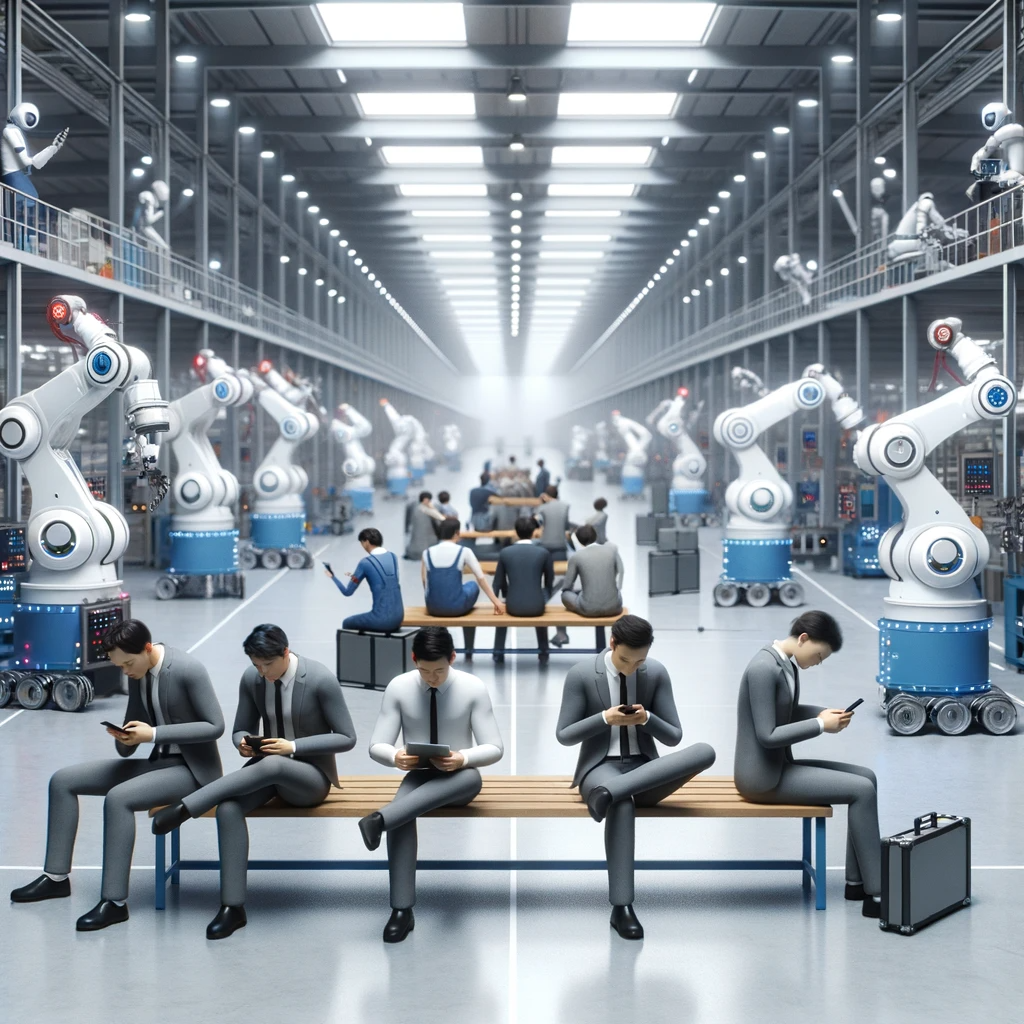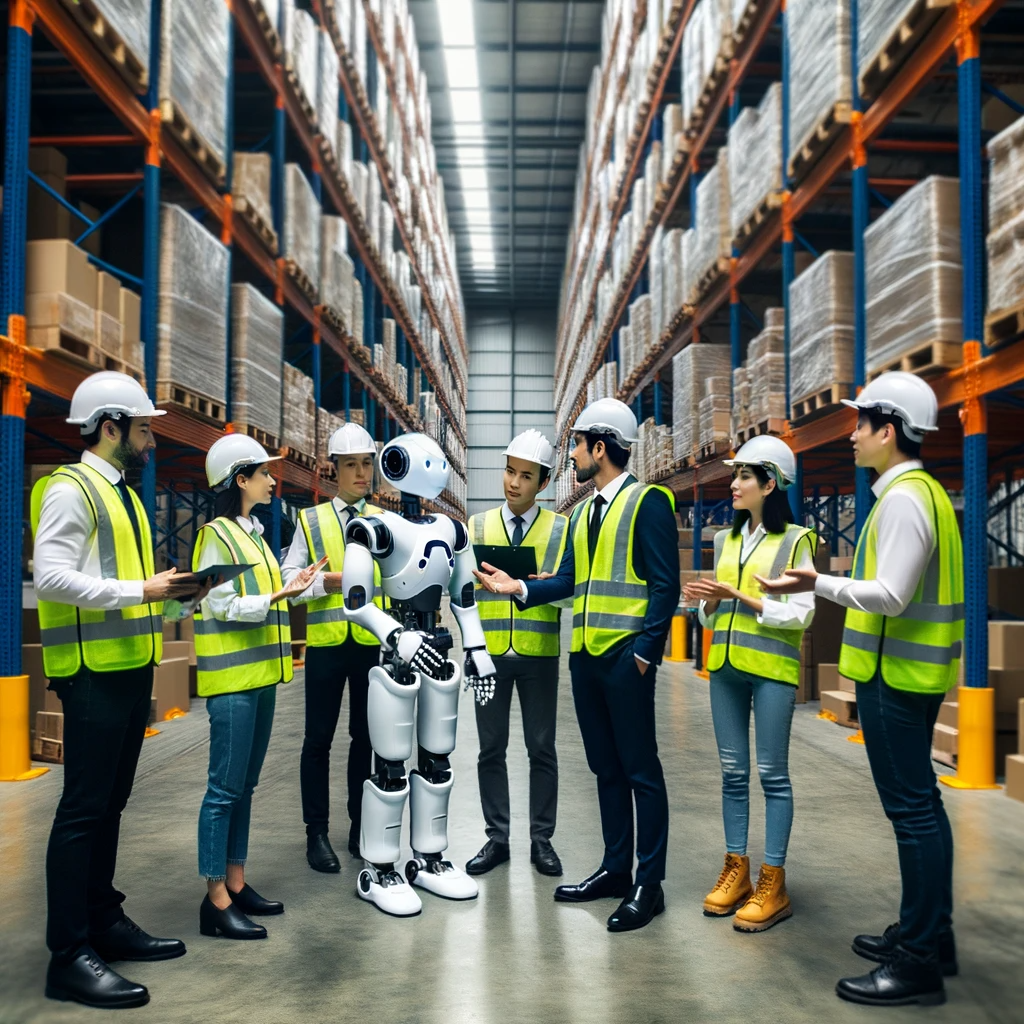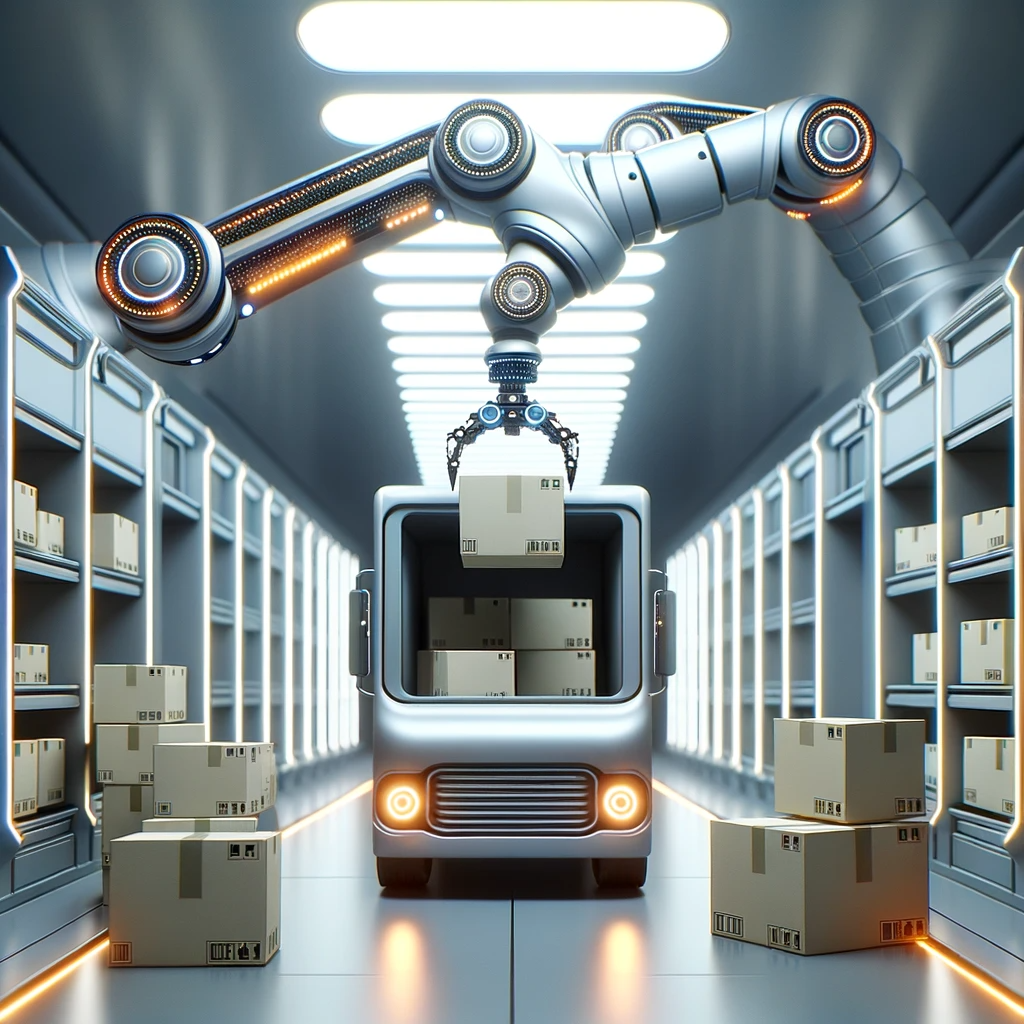What Benefits Do Robots Provide In An Amazon Warehouse?
As per Brooking’s recent study, the efficiency of a warehouse tended by a robot was 90% as opposed to human tending of only 55%.
With the world of artificial intelligence continuously evolving, we are witnessing how tasks ranging from simple, ordinary tasks to long, complex ones are being replaced. When these tasks are matched to business levels, the impact of artificial intelligence is considered revolutionary.
Big eCommerce players like Amazon have integrated robotics into their warehouses. In this article, you will explore the various advantages that automation of tasks brings to businesses and how robotics has become a vital component of their success.

What are the 7 Benefits of an Automated Amazon Warehouse?
Continue reading to learn about these 7 major benefits robots provide in Amazon warehouses in detail.
- Increased Efficiency and Productivity of Operations
- Bring in More Financial Benefits Than the Manual Workforce
- Improved Order Fulfilment on Time For Uninterrupted Delivery
- Managing the Inventory Just the Right Way
- Smart Safety Measures For Warehouse and Employees
- Enhanced Flexibility and Scalability of Robotics
- Cutting-Edge Benefits Against Competitors
1. Increased Efficiency and Productivity of Operations
According to Statistica 2023 numbers, AI could boost U.S. labour productivity growth by 1.5 percentage points over a 10-year period.
Robotics and artificial intelligence are widely known for their speed and precision when completing tasks. One of the most notable benefits is robots’ remarkable speed and accuracy with which they can navigate the warehouse floor.
They operate around the clock, tirelessly moving products and materials to their designated locations, reducing the time and effort usually required for manual handling.
- a) Storage Optimization for Space Utilization
By the optimization of storage processes and the procedure of retrieval, robots help maximize the utilization of space, ensuring that valuable warehouse space is used to its full potential.
Their ability to quickly adapt to changing demands and collaboration with human workers results in smoother workflows and efficient order fulfilment.
The improved efficiency by using robotics results in cost savings for the business and empowers Amazon to meet the ever-increasing demands of the constantly growing eCommerce market with agility and accuracy. - b) Automation Avoids Repetitive Processes
Automation of operations has played a crucial role in the efficiency of operations within Amazon’s warehouses. Automated processes have brought about the seamless completion of the tasks of the warehouse, reducing the margin of error commonly found in the manual workforce.
Automating repetitive and labor-intensive processes, such as product movement and sorting, allows Amazon to redirect its human resources toward more complex, value-added tasks. This boosts overall productivity and ensures that the right products reach their destinations precisely.
Amazon’s dedication to streamlining operations through automation highlights its commitment to delivering exceptional service while maintaining a competitive edge in the continuously evolving eCommerce landscape.

2. Bring In More Financial Benefits than Manual Workforce
Apart from the increased efficiency and the accuracy of completing tasks, the financial benefits of robotics in warehouse operations are significant. While it is true that due to their purchase cost, the initial investment required for setting up the atmosphere for automation and robotics is high, the return on investment (ROI) must be addressed.
- a) Round the clock service
The fact that robots work round the clock without the need for breaks ends the concept of hiring more laborers to cover the shift to meet demand. Apart from the reduction in labor costs, the overall operational costs of the warehouse are diminished, returning the cost of investment required for automation. - b) Adaptability
Another critical financial advantage of robotic automation is quickly adapting to fluctuating market demands and seasonal peaks. During periods when businesses face high demand, reprogramming robots allows the workers to control the workloads that robots can handle, eliminating the need to hire and train a large workforce that will only remain till the market demands. This process can be costly and time-consuming.
This adaptability of robots in various environments and fluctuating market demands ensures that Amazon’s operational costs remain manageable, allowing the company to seize other opportunities in the market. In addition, the enhanced inventory management and order accuracy achieved through automation reduce costs associated with inventory shrinkage and returns. - c) Reduced Overall Costs
According to a recent forecast by Bergur Thormundsson, industrial robotics costs are expected to decrease to 10,856 dollars by 2025. Automation does reduce labour costs and the overall number of workforce required to operate tasks that robots can quickly and efficiently accomplish.
From a business point of view, this is far more beneficial. The cooperation of humans and robots boosts the business’ productivity and revenue. Moreover, the employees’ safety and health risks are reduced, reducing legal liabilities. - d) Positive Return on Investment
To accurately calculate return on investment, the upfront investment against the long-term savings and the revenue generated should be carefully assessed. The cost of human labour, which is replaced by artificial intelligence are:
-Monthly wages, including bonuses,
-Training of new employees,
-Paid leaves,
-Turnover rates.
The cost of automation is almost always done at the start, with maintenance being the only other cost when the robot requires servicing or repairs. The cost savings through reduced labor expenses and the potential for higher throughput can significantly outweigh the initial investment in robots.
In Amazon’s case, where rapid order fulfilment and precise inventory management are vital, the return on investment in robots as opposed to human labour becomes increasingly evident as an intelligent and strategic choice for enhancing the bottom line and setting up a standard in the eCommerce market.

3. Improved Order Fulfilment on Time for Uninterrupted Delivery
In the constantly growing world of eCommerce, meeting customer demands for rapid and accurate order fulfilment is essential. Integrating robots into their warehousing operations has been a game-changer for Amazon and has set a standard for competition in the eCommerce industry.
- a) Smart Product Tracking and Handling
Robots installed in Amazon’s fulfilment centres have advanced algorithms and tracking systems, ensuring products are smoothly and accurately picked, packed, and dispatched.
The swift and meticulous handling of the packages reduces the probability of mishandling packages and accidentally falling and damaging the precious items. This speed and precision are especially critical in handling the surges in order volumes during peak seasons and promotional events. - b) Human Robot Collaboration
The capability of robots to team up and work alongside human employees allows robots to be able to contribute to the flexibility required to meet the dynamic and sometimes unpredictable customer demand. This enables Amazon to consistently deliver to its customers their desired satisfaction and stand out as a reliable service.

4. Managing of Inventory Just the Right Way
Traditionally, handling of inventory and keeping in check with the left stock and the ordered stock were done manually. This often results in inefficient, missing particular stock, under stocking, and overstocking, which results in losses that the business has to bear.
- a) Inventory Management Automation
With the automation of inventory management, these losses were rectified. Robots are equipped with advanced sensors that precisely track inventory levels and locations in real-time. This means that eCommerce businesses like Amazon can always maintain a highly accurate and up-to-date inventory record. Automation in the warehouse reduces instances of overstocking or understocking, which can be costly and lead to customer dissatisfaction. - b) Optimized Inventory
Optimizing inventory management is not only about accuracy but also about cost control. Taking this statement into consideration, robotic automation offers Amazon substantial benefits. Robots help reduce the need for excessive safety stock by enhancing the just-in-time inventory approach. - c) Just In Time
By approaching the inventory with the enchanted, just-in-time approach, Amazon can minimize holding costs associated with storing excess inventory, including warehousing fees, depreciation, and carrying costs. Additionally, the efficiency brought by robots in inventory management allows Amazon to operate with leaner inventory levels, further saving on working capital and storage expenses.
With robots working alongside human employees, Amazon can swiftly and accurately move, categorize, and manage inventory while lowering inventory costs or any other related charges that may present themselves due to mishandling.

5. Smart Safety Measures for Warehouse and Employees
Worker safety is an essential and staple concern in any business, and Amazon has made significant progress in this area by integrating robots into their warehousing operations. Robots are designed to operate safely with human employees, featuring modern sensors and programming that ensure they can detect and avoid obstacles, including people.
- a) Risk Mitigation
The feature of programmability of robots, along with the help of sensors, minimizes the risk of accidents, such as collisions between workers and robots. Apart from the risk mitigation benefits, robots are often deployed to handle physically demanding or potentially hazardous tasks, such as heavy lifting. - b) Employee Health
By automating these tasks, Amazon significantly decreases the risk of strains, sprains, and other physical injuries commonly associated with manual labour, reducing the chances of workplace injuries related to repetitive lifting or exposure to harsh environmental conditions.
In addition to promoting a safe environment for the employees, the precision and consistency of robots minimize the chances of accidents stemming from human errors, such as mishandled products or collisions between equipment.
Amazon’s commitment to worker safety safeguards its employees and mitigates the associated costs of workplace accidents and legal liabilities, contributing to a safer and more efficient work environment.

6. Enhanced Flexibility and Scalability of Robotics
Robots have become the backbone of Amazon’s warehouse scalability, ensuring the company can rapidly adjust to evolving market dynamics and consumer preferences. The scalability and flexibility offered by robots are phenomenal, especially in the highly competitive eCommerce landscape.
- a) Seamless Adaptation to Market Trends
With robots handling various tasks like inventory management and order fulfilment, Amazon can seamlessly expand or contract its operations based on market trends without incurring high labor costs or operational bottlenecks. - b) Fulfilling the Demand Fluctuations
The adaptability of robots allows the company to respond to unprecedented fluctuations in demand quickly and efficiently manage seasonal peaks, special promotions, or unforeseen market shifts. The role of robots in warehouse scalability has become an indispensable part of Amazon’s business strategy, guaranteeing that it can sustain growth, adapt to market changes, and lead the eCommerce industry by staying at the top.

7. Cutting Edge Benefits Against Competitors
The eCommerce industry is constantly growing, and the competition between the players is tough; hence, staying ahead of the curve is essential. Amazon’s strategic use of robots places it in a formidable position. By integrating robots into its warehousing operations, Amazon can consistently offer faster delivery times, higher order accuracy, and improved customer service.
- a) The potential of Artificial Intelligence
The company’s innovative use of automation in its warehouses has shown technology’s immense potential in enhancing efficiency, reducing costs, and ensuring rapid order fulfilment. This level of operational excellence has forced competitors to reassess their strategies and consider similar implementations. - b) Standard Set by Amazon
Amazon’s success with robotics has also influenced customer expectations, as online shoppers now look for fast, accurate, and reliable service as a norm. These factors create a significant competitive advantage, enhancing customer loyalty and attracting new buyers.
Amazon’s reputation for reliable and efficient order fulfilment has become a distinguishing factor, setting it apart from competitors and further solidifying its dominance in the eCommerce landscape. According to recent findings by Vox, Amazon has more than 200,000 mobile robots working inside its warehouse network.
Final Words
Using artificial intelligence and robots in an Amazon warehouse or fulfilment centres brings significant benefits that outweigh ethical and investment concerns. AI automation has revolutionized efficiency, resulting in faster order fulfilment, heightened customer satisfaction, and a competitive edge in the eCommerce market.
In summary, using robots in an Amazon warehouse offers undeniable benefits. Improved efficiency, enhanced customer satisfaction, and optimized employee safety contribute to their success in the eCommerce market. By setting a precedent for automation, Amazon demonstrates the advantages of integrating artificial intelligence and robotics into warehouse operations.
